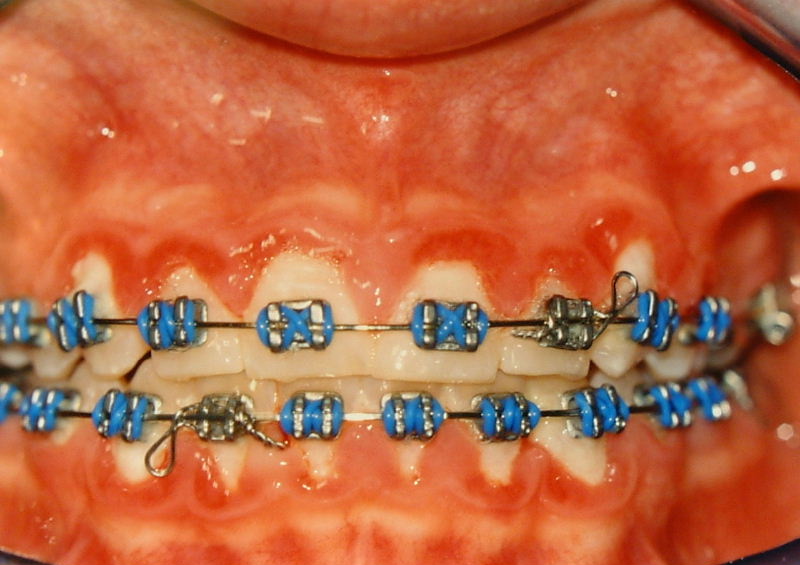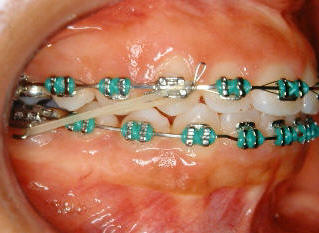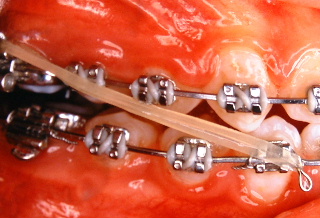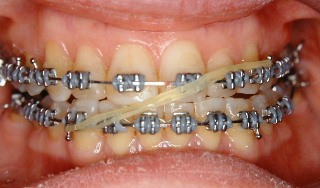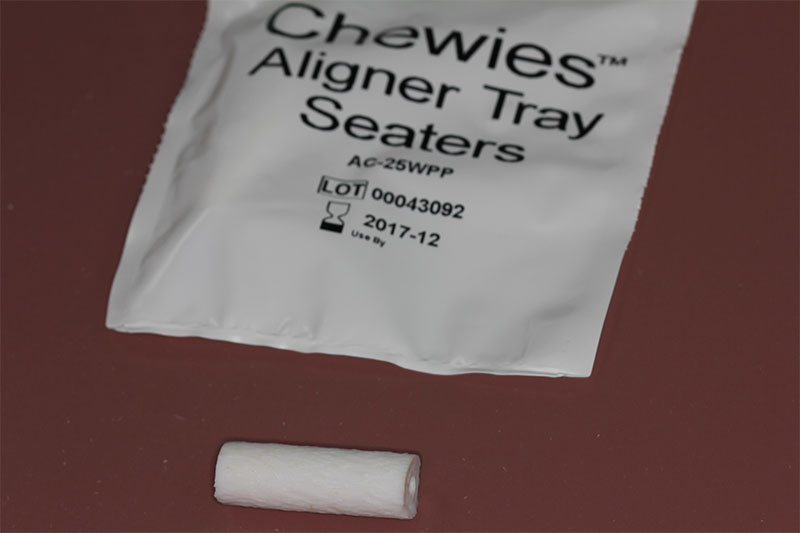Emergencies 540-722-6700
Broken band or bracket (moderately serious)
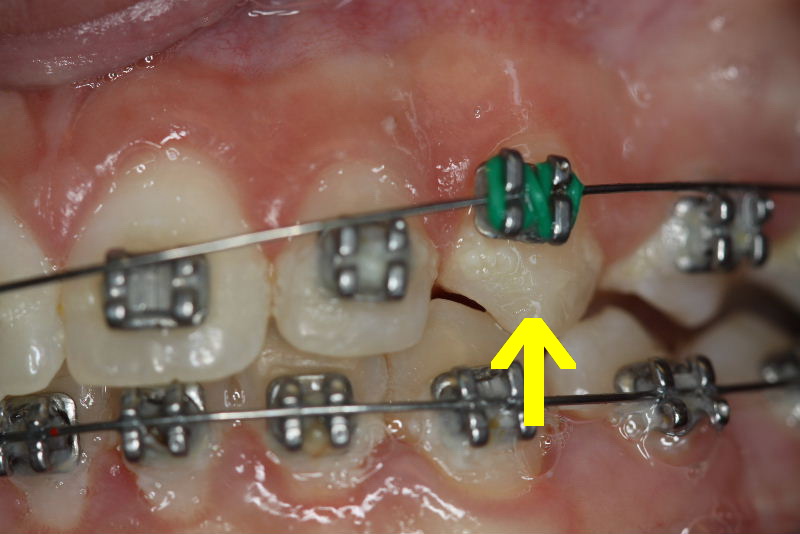
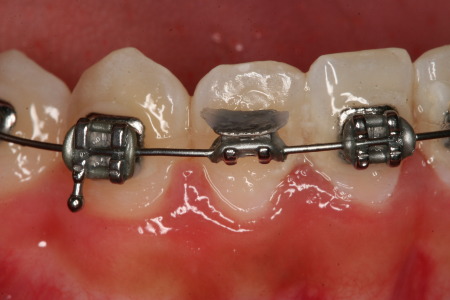
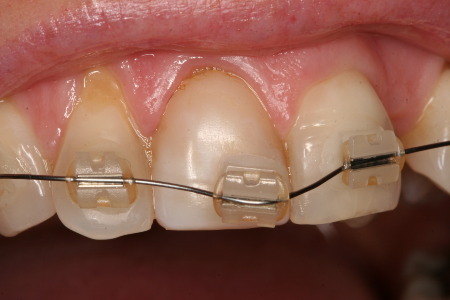
Cause: Eating hard or sticky candy, chewing gum or pencils and pens, sports injuries, accidents.
Solution: Call the office and schedule a repair appointment as soon as possible.
Wire out of the back band tube (not serious unless it is poking)
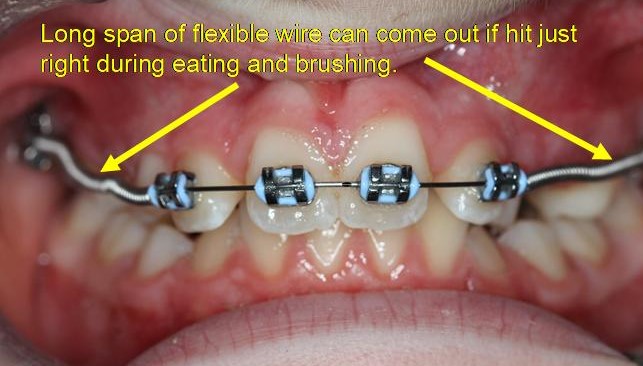
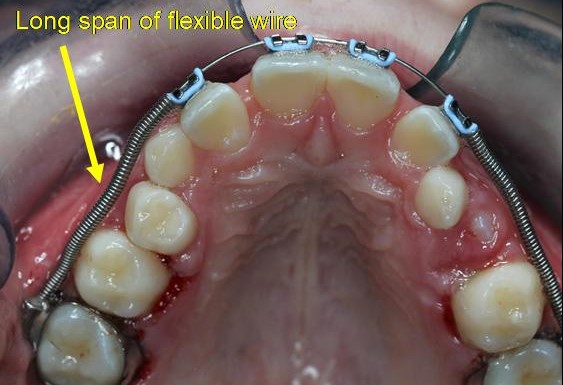
Cause: This can be a normal occurance when eating or brushing especially early in treatment when the arch wires are small and flexilble.
Solution: Put the wire back into the small, rectangular tube in the middle of the band (not the big round tube that is lower on the band), or cut the wire just behind the front bracket and remove the wire from the mouth. Also, call the office and schedule a repair appointment as soon as possible.
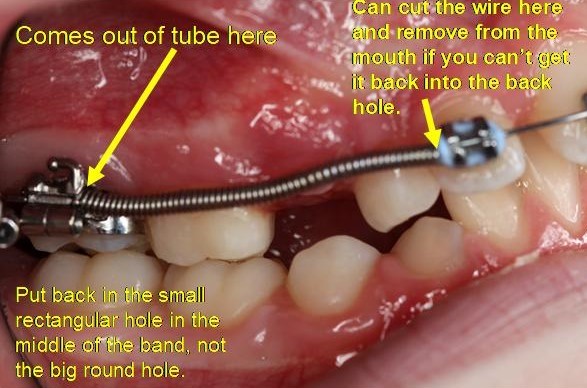
Broken (rubber band tie) K-tie (not serious)Solution: Call the office and schedule a repair appointment as soon as possible.
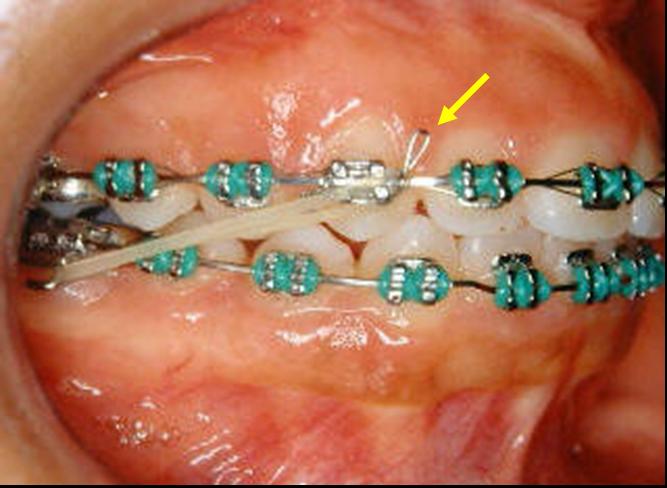
Cause: Eating hard or sticky candy, chewing gum or pencils and pens, sports injuries, accidents, normal wearing of rubber bands.
Solution: Call the office and schedule a repair appointment at your convenience.
Loose (rubber band tie) K-tie (not serious)
Cause: Normal elastic wear, not a problem; no intervention needed unless the K-tie comes off.
Wire Poking
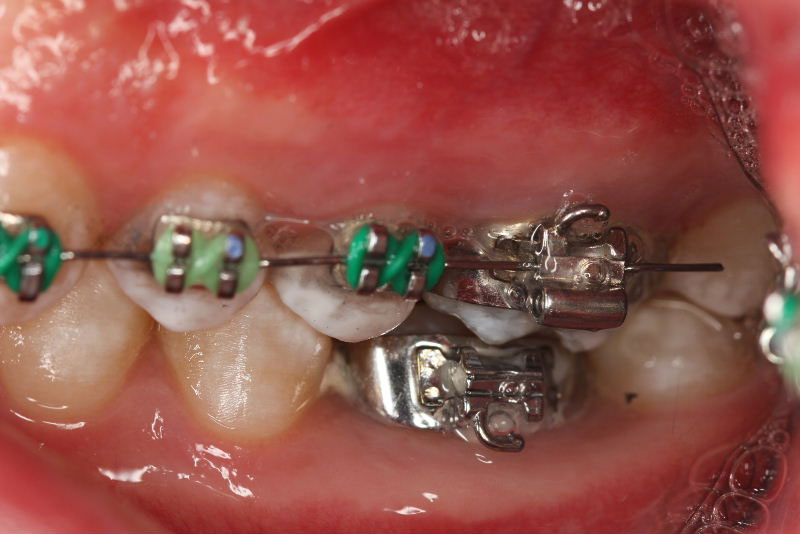
Cause: Wire shifting in the mouth.
Solution: Clip the wire with a small wire cutter or call the office to schedule a wire clip appointment at your convenience.
Bleeding gum tissue or gum tissue that is overgrowing the braces (not serious if a short-term problem. May become serious if it becomes a long-term problem)
Cause: Unhealthy gum tissue bleeds due to insufficient tooth brushing and insufficient flossing.
Solution: The gum tissue can be healed by better and more frequent tooth brushing and flossing. Rinsing one or more times per day using a fluoride mouthwash is also helpful. Click here to view video on flossing techniques.
Mild or moderately sore teeth (normal)
Cause: Teeth may be mildly to moderately sore when the braces are first placed, and they may be mildly sore for several days following an adjustment. Adults usually experience more tooth soreness than children.
Solution: Tylenol or Advil or whatever medication that you would take for a headache. Please check with your physician as to which medication is appropriate for you.
Severely sore teeth (serious)
Cause: There are many varied causes of severe dental pain, such as dental abscesses, fractured teeth, tooth decay and gum tissue disease.
Solution: Call Dr. Staggers immediately to schedule an appointment for today.
Sore or irritated cheeks, tongue or lips (normal)
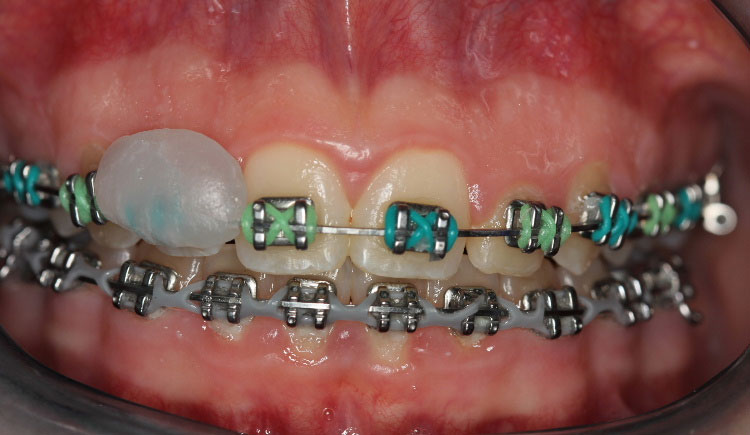
Cause: New braces may rub or irritate the cheek, lips or tongue for several days.
Solution: Using wax on the braces may help while your mouth get use to the new braces. Using over-the-counter teething gel on sore areas is also helpful.
Lost or broken appliance or retainer (moderately serious)
Solution: Call Dr. Staggers' office as soon as possible to schedule a replacement appointment.
Broken permanent retainer (moderately serious)
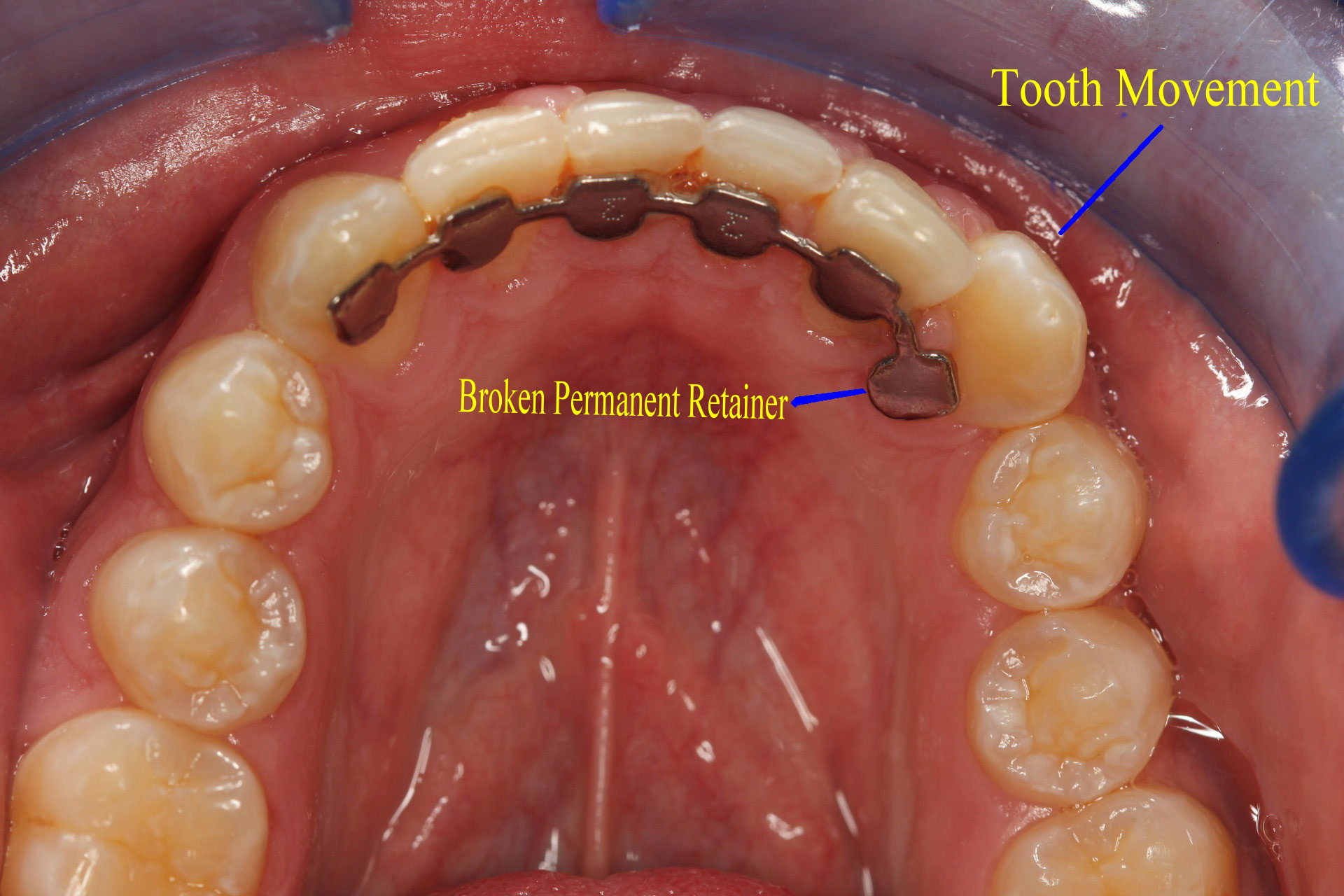
Solution: Call Dr. Staggers' office as soon as possible to schedule a replacement appointment.
Lost rubber bands (not serious)
Solution: Call Dr. Staggers' office as soon as possible so that replacement elastics can be mailed to you or stop by the office during normal business hours to pick up a new bag of rubber bands. Do not borrow elastics from other people as they may not be the correct size for you. Most orthodontic elastics look similar, but they can be very different in strengths. Using the wrong size elastics can damage your teeth.
Loose teeth (normal)
Cause: Teeth will be mildly loose during orthodontic treatment. Adults usually experience more looseness than children.
Solution: The teeth will tighten up after the braces are removed.
Teeth knocked loose, displaced or totally out of the mouth (very serious)
Cause: Sport accidents, fighting
Solution: Call Dr. Staggers' office immediately for recommendations. Time is a critical factor when trying to save a knocked-out tooth. If a permanent tooth is totally out of the mouth, replace it back into the tooth socket immediately. If this is not possible, place the tooth in milk and transport the patient to the nearest dental care facility. Teeth that have been out of the mouth for more than one hour have a poor chance of survival.
Having trouble making a turn made on a rapid palatal expansion appliance RPE
Solution: CLICK HERE TO VIEW RPE VIDEO and CLICK HERE TO VIEW RPE VIDEO 2. These videos demonstrate making a RPE turn.
Have made some turns on the rapid palatal expansion appliance RPE, but now can't find the key hole
CLICK HERE TO VIEW VIDEO to see a demonstration on how to fix this problem
Pressure felt following turn made on a rapid palatal expansion appliance RPE (normal)
Cause: Normal occurrence following the first few turns made on an RPE. The teeth may be mildly sore for a few days following placement of the appliance.
Solution: Tylenol or Advil or whatever medication that you would take for a headache. Please check with your physician as to which medication is appropriate for you.
Pain felt following turn made on a rapid palatal expansion appliance RPE (serious)
Solution: Call Dr. Staggers immediately to schedule an appointment for today.
Can't find the next hole following turn made on a rapid palatal expansion appliance RPE (not serious)
Cause: Not making a complete turn or pulling the key forward to remove it after making the turn.
Solution: Call Dr. Staggers and schedule an appointment to reset the hole or view the above listed video on how to fix this problem.
A large space has developed between the upper front teeth as a result of making turns on a rapid palatal expansion appliance RPE (normal)
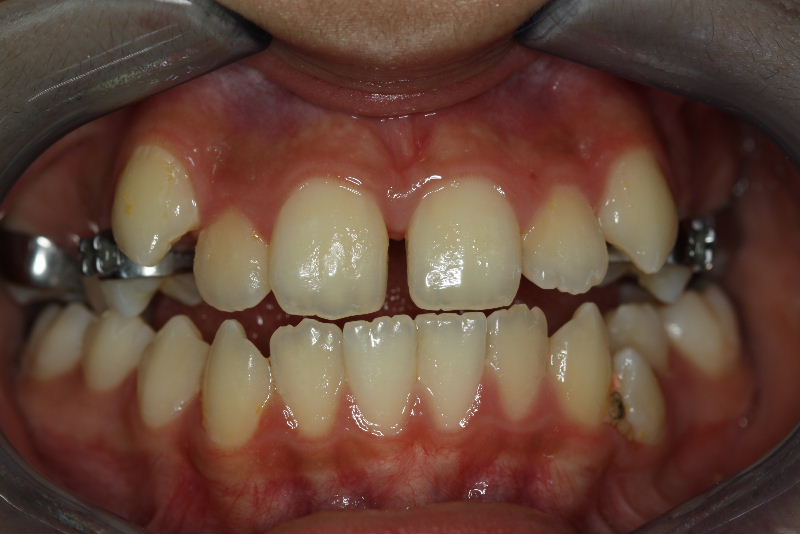
Cause: As the expansion appliance is widened, the upper front teeth are moved apart.
Solution: No action is necessary since this is a normal part of widening the upper jaw. After all turns are made, the teeth will drift together in a few weeks and close the space.
Retainer or removable appliance is rubbing a sore spot on the gum tissue (not serious)
Solution: Call Dr. Staggers and schedule an appointment to adjust your retainer/appliance.
Cannot figure out how to wear the elastic rubber bands (not serious)
Solution: Call Dr. Staggers and ask how to wear the elastics (class II, class III, midline, etc.). Make sure that you wear the correct size elastics. Sizes are usually designated by countries (Switzerland, Japan, etc.) or animals (Bear, Whale) on the elastics' package. Be sure to use the correct elastic size. Do not borrow elastics from other people since they may be the wrong size. Most orthodontic elastics look similar, but they can be very different in strength. Using the wrong elastics can DAMAGE YOUR TEETH. Do NOT double-up elastics to make up for lack of wear since this can DAMAGE YOUR TEETH.
Class II elastics: From the lower back teeth to the upper front teeth (pictured below)
Class II elastics with clear aligners: From the lower back tooth hook to the cut out area on upper of the aligner (pictured below)
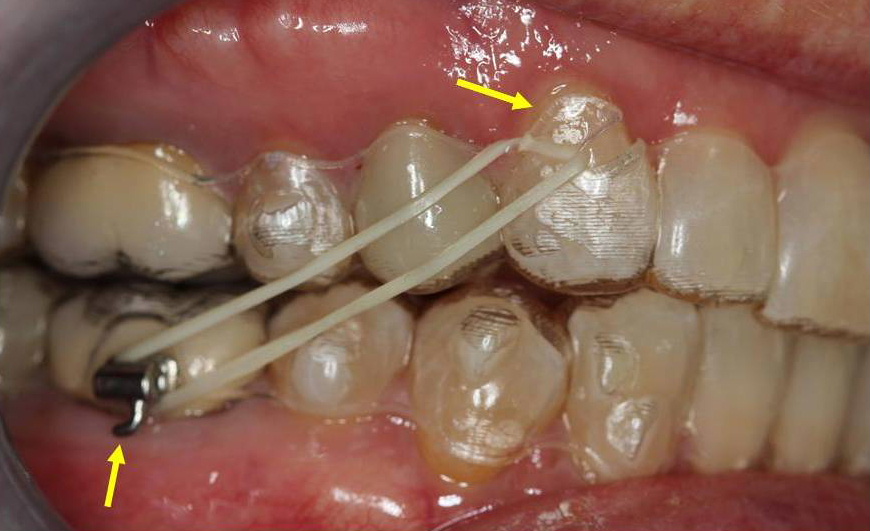
Class III elastics: From the lower front teeth to the upper back teeth (pictured below)
Midline elastics: From one side of the lower front teeth (right or left depending on the location of the elastic hook) to the opposite side of the upper front teeth (pictured below)
V elastics: From the one side of the upper teeth to the same side of the lower teeth and back to the upper teeth (pictured below)
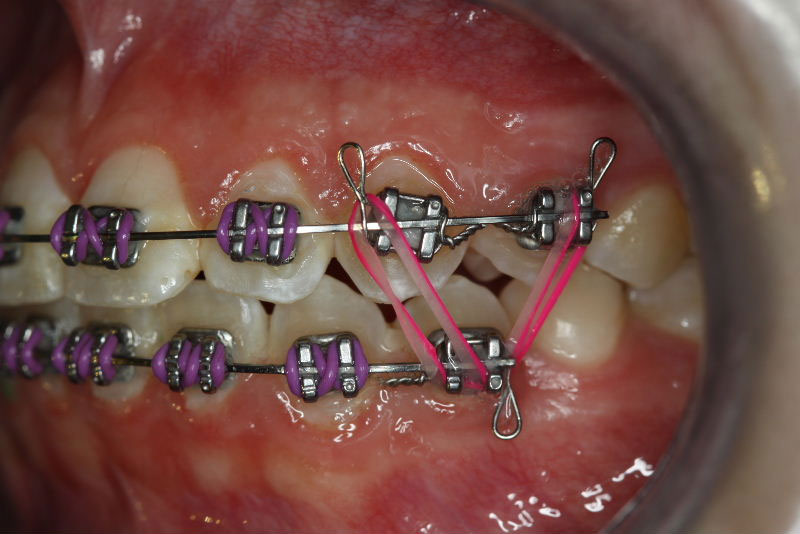
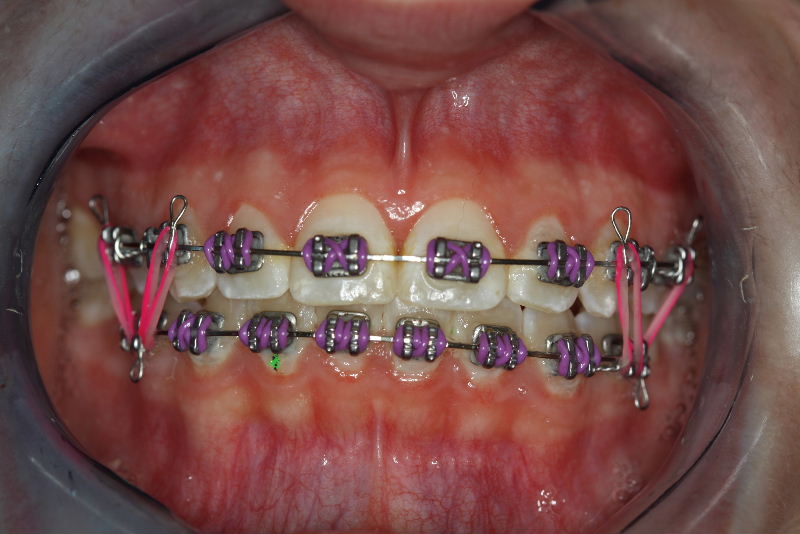
Through-the-bite elastics: From the outside of the upper teeth to the inside of the lower teeth (pictured below)
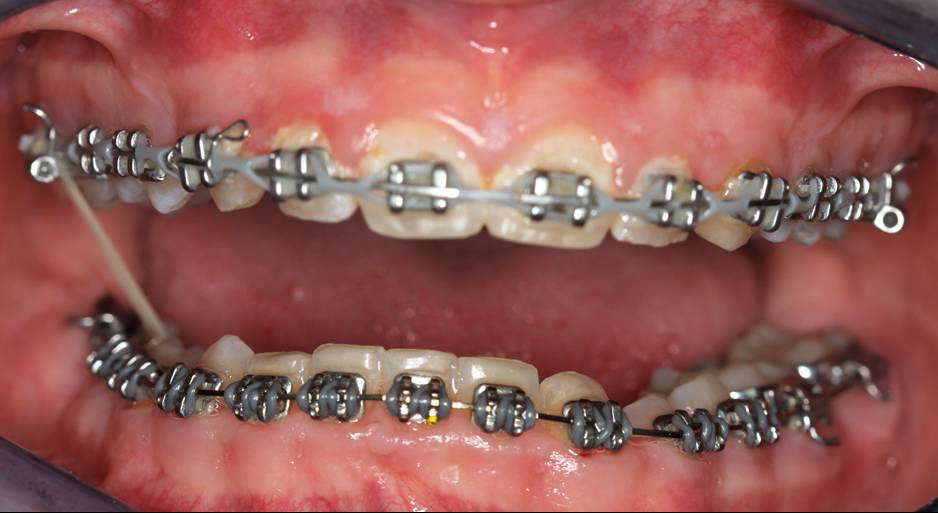
Terminology

Aligners not fully seating on several teeth or a gap is present between the aligner and the teeth (can be serious if left unchecked)
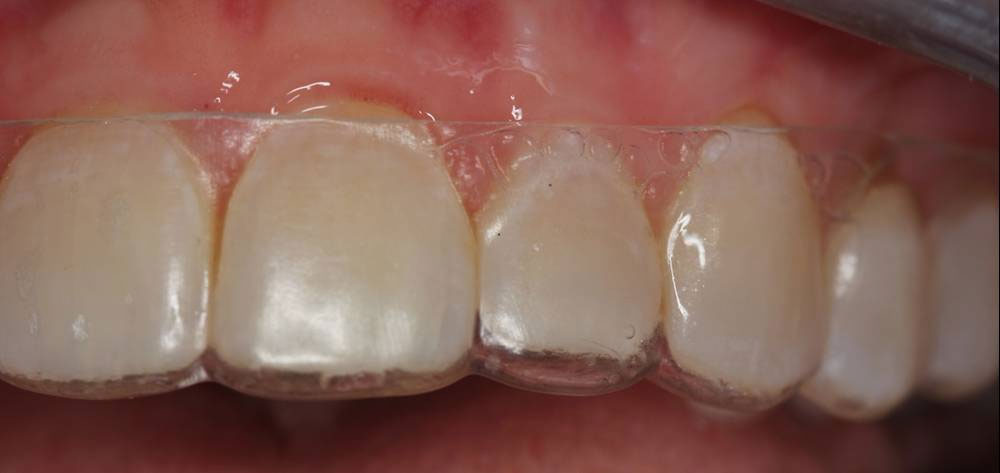
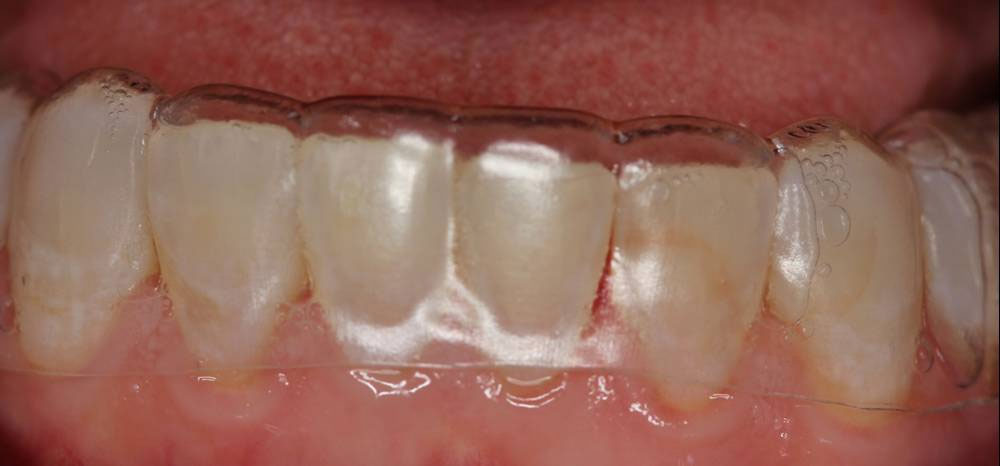
Cause: There are many reasons for this. Common causes are insufficient wear of the aligner or the aligner is not seated all of the way on the teeth. If this problem occurs after switching to a new aligner, use the chewie aligner seaters by placing the chewie between your teeth and gently squeezing on the chewie. If the aligner does not fully seat within the first day of wear, make an appointment to have the aligner checked. Also, make sure that you do not skip an aligner when changing to a new aligner. Always wear aligners in numberical sequence without skipping any numbers.
Solution: Call Dr. Staggers and schedule an appointment to have your aligners checked if this problem persists for more than one day.
Broken Retainer Wire (can be serious)
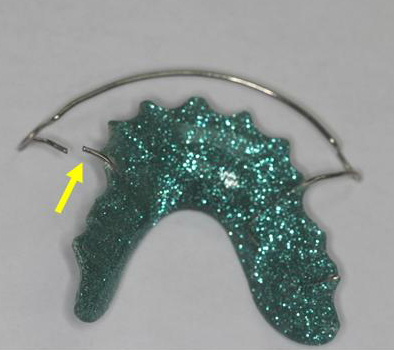
Cause: There are many reasons for this. The most common reason is removing the retainer by pulling on the front wire, and by putting the retainer in the mouth by pushing on the front wire. This continuous up and down pushing fatiques the front wire, and then it breaks right where the wire meets the plastic. Always place and remove retainers by grasping the back clasps, not the front wire. Other causes for this type of breakage is biting the retainer in place or forcing a poorly fitting retainer in place. Placing the retainer directly in a pocket, back pack or purse without putting it in the case can also result in this type of breakage.
Solution: Call Dr. Staggers and schedule an appointment. This type of retainer breakage can not be repaired. The retainer must be replaced.
Broken Retainer Plastic (can be serious)
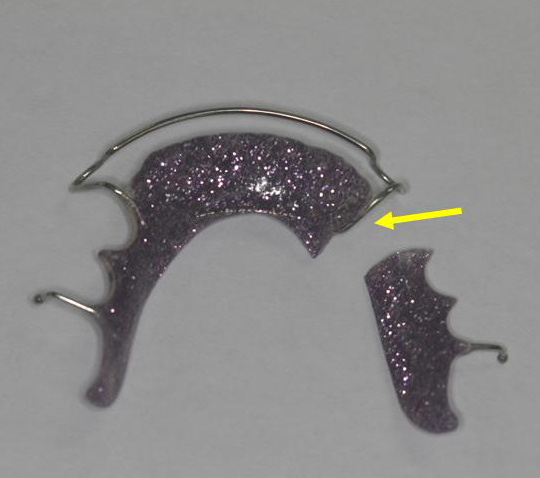
Cause: There are many reasons for this. The most common reason for this is placing the retainer directly in a pocket, back pack or purse without putting it in the case can also result in this type of breakage. Other causes for this type of breakage is biting the retainer in place or forcing a poorly fitting retainer in place.
Solution: Call Dr. Staggers and schedule an appointment. This type of retainer breakage can not be repaired. The retainer must be replaced.

